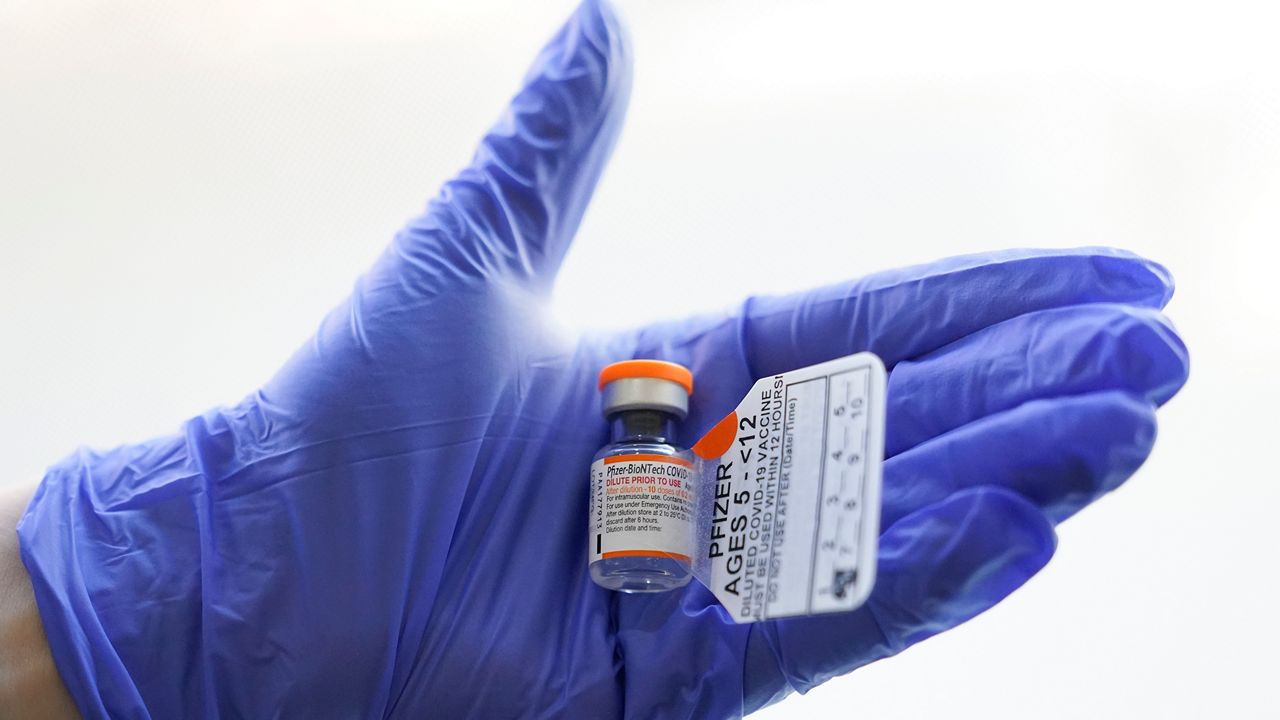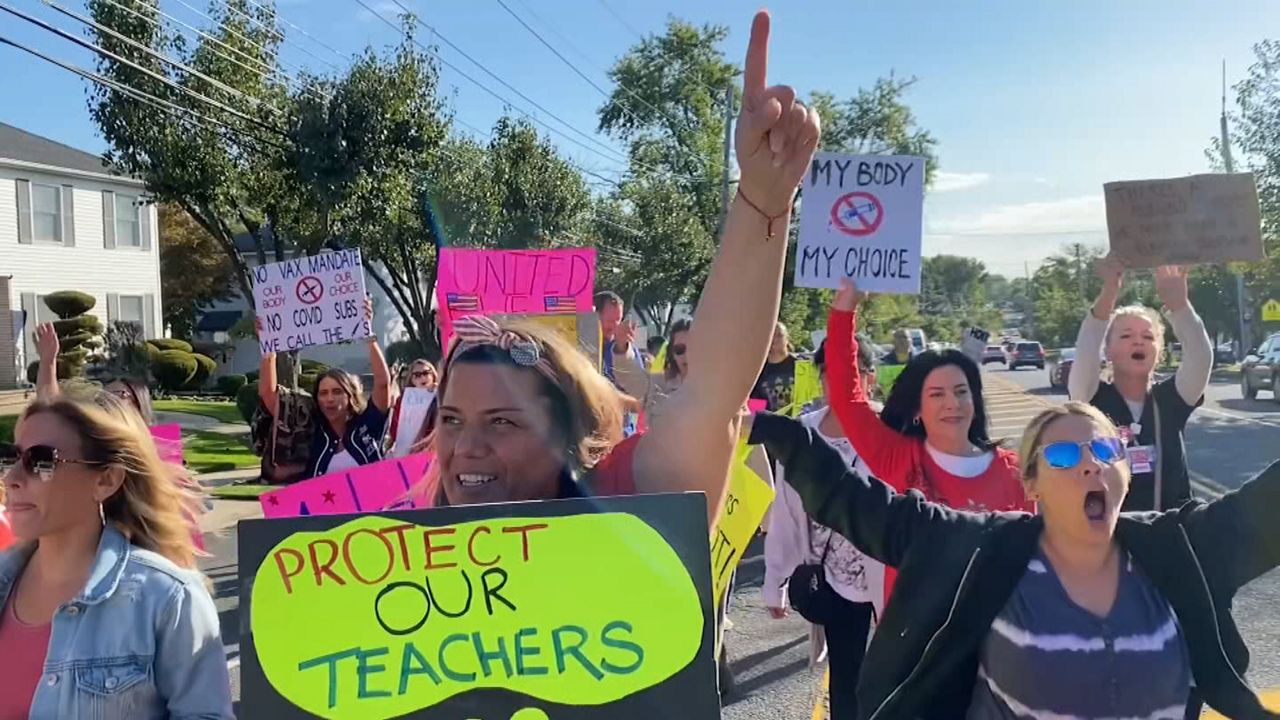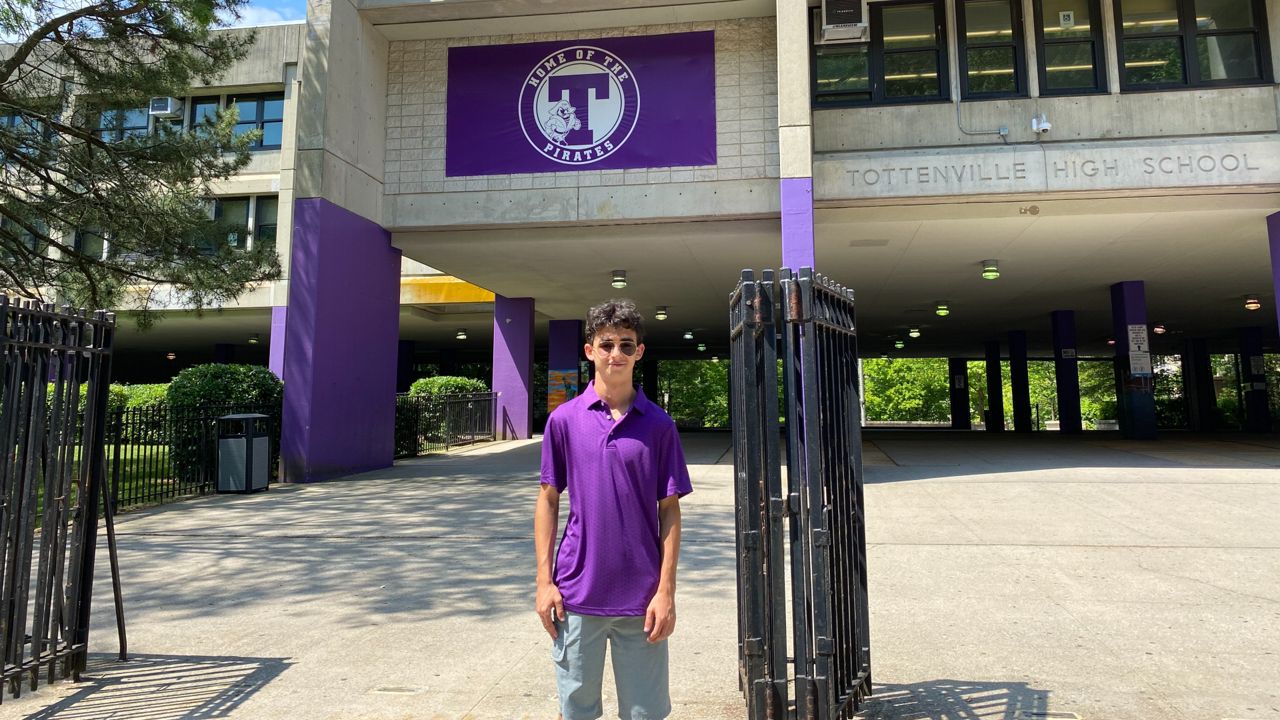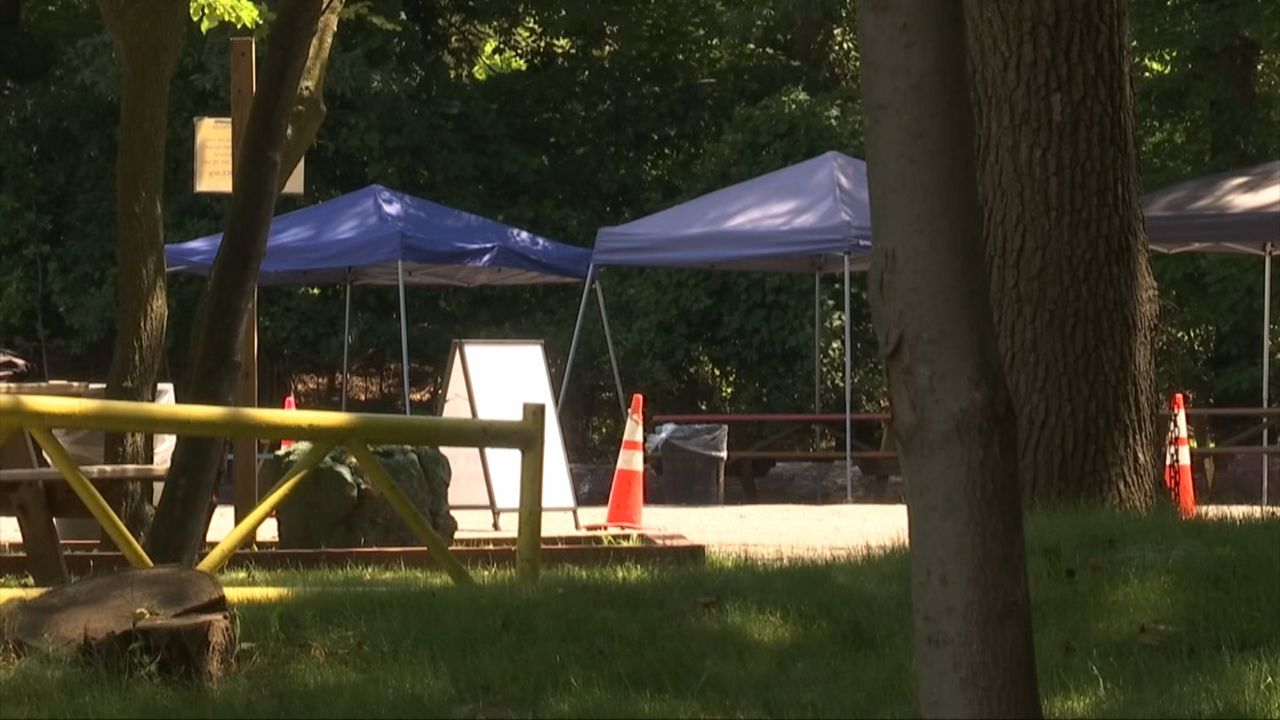Most city schools haven't seen students since March. But at P.S. 56 on Staten Island this week, students sat at distanced desks, learning about sharks, painting with watercolors and even singing. It's one of the city's 57 school-based regional enrichment centers, or RECs.
"We've been here since March, the beginning, so four months. This was our beacon, our happy place,” Tracy Harrigan, a parent whose daughter attends the P.S. 56 REC, said.
RECs serve 12,000 children of essential workers, and have remained open during the summer, to provide enrichment and childcare. For Harrigan, who works in retail and whose husband is a firefighter, it’s a lifeline.
"Walked in the door, everything was at ease. They’ve done a remarkable job creating a school culture in a short period of time,” she said.
As parents and educators struggle to imagine what schools will look like this fall, these centers may offer a glimpse. Students and visitors, including NY1, are checked at the door for a fever. Kids sit far apart, many fewer in a classroom than usual. Teachers wipe down surfaces and custodians deep clean. And yes, even the young students wear their masks. One hopeful sign: There have been no confirmed COVID-19 cases among the students and staff here.
"I will never forget the first day I picked my five, my six year old up from here and she goes to me, 'Mommy, I washed my hands so many times today. And I said, 'Did you keep your mask on?' And she goes, 'Yes, I keep my mask on but when I eat my lunch I can take it off,” parent Kathleen Cracchiolo said.
Joseph Miller, who oversees the P.S. 56 center, cautions that opening a REC and a school aren't the same.
"While there may be some things to learn from what we’re doing here, I think the practical application of what we’re doing here to openings, it’s an unfair comparison,” he said.
Schools have bigger logistical challenges. The RECs serve significantly fewer students, and they arrive at staggered times.
"Children don’t have to all be here at 7 o’clock, so I don’t have a line of 400, 600, 800 students coming in the door,” he said.
And the staff at RECs – many of them substitute teachers or paraprofessionals – help children through their remote learning, but aren’t responsible for their academic outcomes. Instead, children at the RECs used laptops or tablets to learn remotely alongside their classmates during the regular school year.
P.S. 56, a relatively new building, has sinks in classrooms, while many older schools do not. But the city says the deep cleaning done here will be done everywhere in the new school year.
"Our parents see that our custodians are out and about all day long cleaning surfaces, cleaning doorknobs, cleaning commonly used areas," Miller said.
Miller, who like all REC staffers volunteered to work here instead of from home, doesn't see RECs as a path forward but as a way to give back.
"We’re very thankful for the first responders and our essential workers that are out there every day, and I think this is the least we could do to help keep the city up and running,” he said.
The RECs will close at the start of the school year, when buildings are once again needed for regular classrooms.









